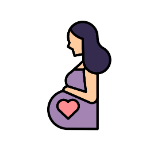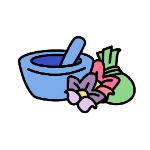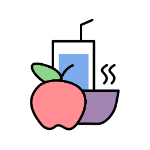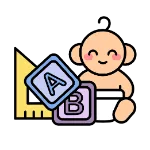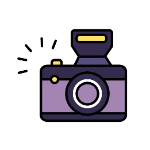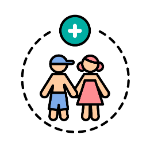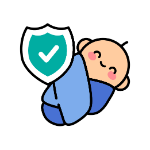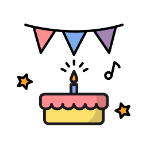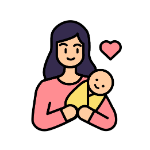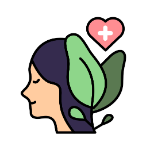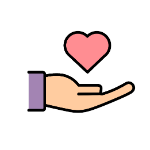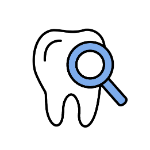
Keep Your Baby’s Skin Smooth And Clean By Paying Attention To These 10 Important Things
The skin on your baby is very fragile, delicate and thin which means that they are extremely sensitive and can react easily to weather temperatures followed by irritants.
Irritants can come from a variety of substances but mainly through the chemicals contained in the products you use on the baby. Avoiding these chemicals can be as easy as purchasing organic products. You may also pay attention to these 10 alternatives in order to ensure your baby’s skin is healthy and clean at all times.
#1 Use unbleached disposable nappies
As far as dioxins are concerned, they’re a family of organochlorines that includes one of the most toxic chemicals yet made. In the past, dioxin traces were found in chlorine-bleached white paper and pulp products, including disposable nappies. However, nowadays nappies are usually oxygen-bleached (using hydrogen peroxide), which forms no dioxin.
However, do we know what consequences hydrogen peroxide will bring? For safety purposes, it is best to use unbleached disposable nappies from the market to make sure your baby does not come into contact with any bleach.
#2 Opt for organic talc powder
Contamination of wounds or body cavities with normal talc is liable to cause granulomas. Inhalation of talc can cause respiratory irritation while prolonged exposure to talc may produce the symptoms of pneumoconiosis.
Aside from that, normal talc is also liable to be heavily contaminated with bacteria including Clostridium tetani, CL welchii and Bacillus anthracis. Organic talcs, on the other hand, are usually made with cornflour, arrowroot and white clay and are wonderfully safe and very effective for keeping a baby's skin dry.
#3 Massage oils after bathing
Avoid mineral based oils as they contribute to the drying of the skin when absorbed. Instead, use natural and organic oils that continue to soothe and moisturize the baby's skin.
Try products that contain sweet almond oil, coconut oil, sunflower oil and chamomile, rose, lavender and mandarin essential oils. But remember to always do a test patch first and watch for any redness or irritation. You only need the tiniest amount of oil to massage into your baby's skin, less than a teaspoon.
#4 Natural bottom wipes
Homemade bottom wipes can be made easily by cutting a roll of strong paper towels in half. Take out the cardboard inner roll and mix two cups of water with ½ cup sweet almond oil and ½ cup of organic baby wash. Place one half of the roll into a container and pour over ½ of the solution. Store in a container.
For a simple wiping solution, try a cup of cool chamomile tea and a teaspoon of honey mixed well. Honey is a natural antiseptic so it is great for keeping baby's bottom germ-free and will help treat existing nappy rash.
#5 Soap free washing or bathing
Newborns can be gently and easily wiped down with rose hydrosol.
This is distilled water that contains healing and soothing aromatic rose extracts suitable for the most sensitive of skin types and is very economical as you only use a small amount. Older babies should be washed with organic baby washes as adult products tend to have harsher ingredients that can irritate the baby's skin. Use baby washes sparingly.
#6 Washing baby's clothes frequently
Always wash your baby's clothes before using and make sure you use pure soap flakes or a gentle skin sensitive washing solution.
Do not add water softeners or conditioners as these can cause skin irritation. Dissolve the flakes in a little warm water before adding to the washing cycle. Baby's clothes and sheets do not need to be disinfected, just dry in the sun.
#7 Using organic baby lotion
Organic baby lotions can be used as an alternative to massage oils and help keep baby's skin from drying out. However, the baby's skin is sensitive so monitor the results carefully and discontinue use if any sign of redness or irritation occurs.
#8 Sanitizing cloth nappies
Washing cloth nappies at a temperature of 65 °C or hotter and then drying them in direct sunlight should eliminate any harmful germs as ultraviolet light has a sterilizing effect and a natural bleaching ability.
Natural Nappy Soak: Half fill a nappy bucket, then add a quarter of a cup of bicarbonate of soda and swish to dissolve, add 3 drops of lavender essential oil and 3 drops of tea tree essential oil. Soak nappies in this overnight then wash as per normal. Add half a cup of white vinegar to the final rinse for softer nappies. Always make sure the nappy bucket lid is firmly in place, and always out of reach of children.
#9 Paying attention to the umbilical stump
For newborns, the umbilical stump must be kept clean and dry until it falls off naturally. Fold baby's nappy below the stump so it's exposed to the air and not to urine. Avoid bathing your baby in a bathtub until the stump falls off.
You may also try using the hydrosol wash mentioned above. Studies have shown that leaving the stump to dry out naturally is the quickest method. Do not apply any drying agents as they can cause irritations.
#10 Cradle cap care
A cradle cap is the result of overactive glands in your baby's scalp and is not dangerous. It looks like a crusty patch of skin that has been attributed to the hormones the mother passes to her child at birth and can continue for several months.
The gentlest and safest way to cure cradle cap is to wipe the area with sweet almond oil, leave it on for about five-ten minutes then wash the baby's scalp with an organic baby wash or shampoo. Do not leave the oil on the scalp as this will cause further dryness as the glands to become ‘confused’.
The skin is the largest organ on your baby’s body, so it’s important to look after its health. Remember to keep your baby’s skin clean, dry, and out of the sun. It’s also important to not overdo it with moisturizers or other skin products, which can sometimes make skin problems worse. Babies are prone to several different skin conditions in the first year of life. As a parent, it is your utmost responsibility to protect your child and make sure that they are growing up in a healthy way.
Want to read more? Check out the 7 worst foods for your children's teeth and the top 10 safety devices that you need in your home.
